COVID search trends during the pandemic
How marketers can learn about their audiences by studying what they're searching forSearch data is fascinating. First of all, yes, I know I’m a nerd, but let’s move past that. While sources like Facebook and Twitter tend to be influenced by social proof and peer pressure, I see search data as a more accurate peek into what audiences really think and care about. Especially if you read or work on subject matter that has issues with stigma (think personal healthcare), search channels are essential for tapping into audience trends.
[ICYMI, Here’s what healthcare marketers need to know for 2021]
But what can you read from that data? What are the implications for your content strategy? Let’s walk through a few case studies of how to use search data on the key topic of 2020: COVID-19.
Match your messaging with the words your audience uses
This is a table stakes use case: using search data to learn what keyword synonyms are searched for more often. Even if you or your organization use particular terminology, you’re going to want to write for how your audience queries.
For example, how are people searching for pandemic updates in their Google search bar? There are three common terms that could be used to search for this: coronavirus, COVID, and COVID-19. So let’s look in Google Trends to see what is most popular.
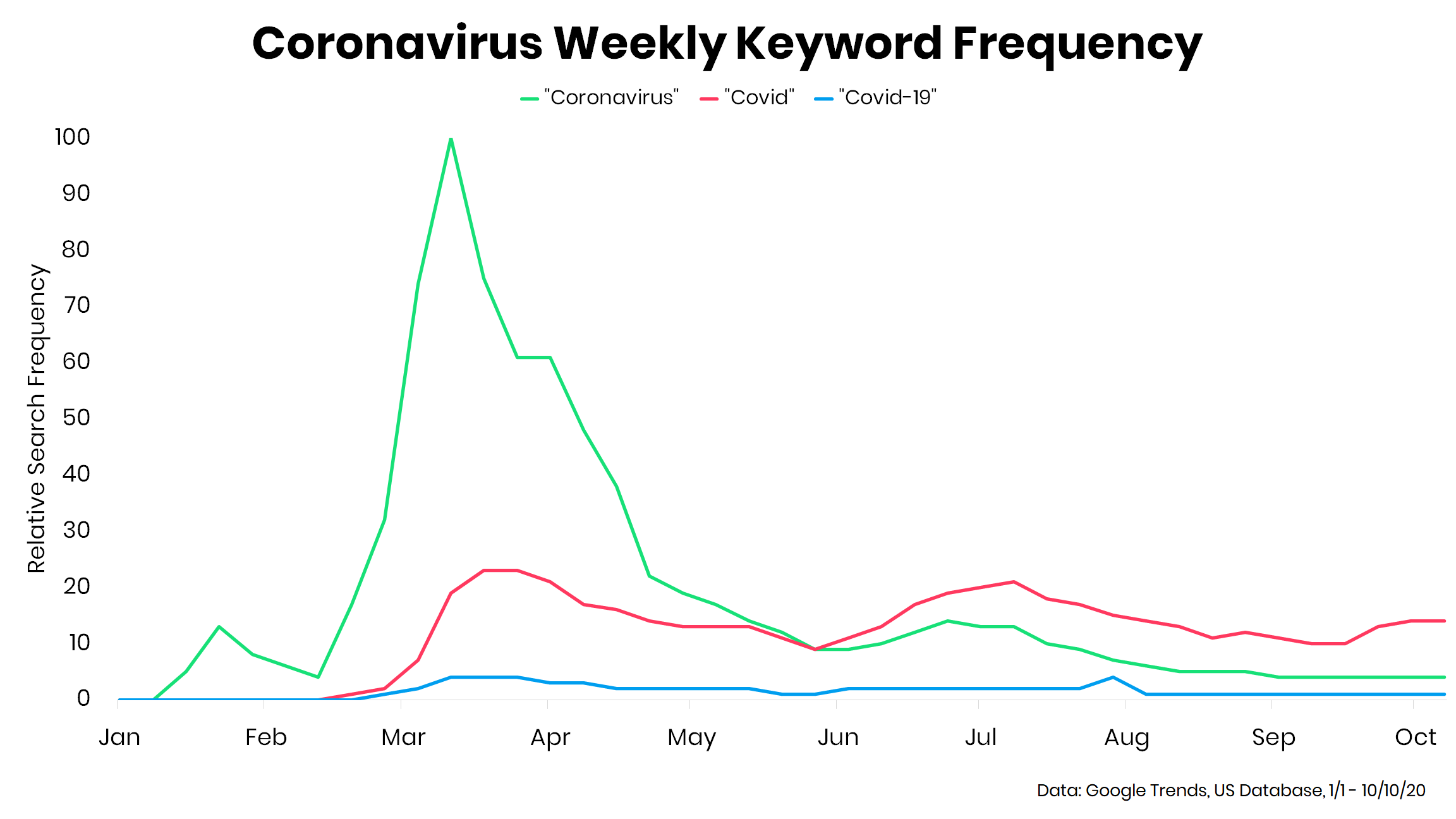
From this we can see that more people were searching for coronavirus as a term at the beginning of the pandemic, but audiences have started to shift to covid over time. COVID-19 although more accurate as the name of the disease, is a distant third. The same trend is present if you add variations on those keywords, such as “symptoms”:
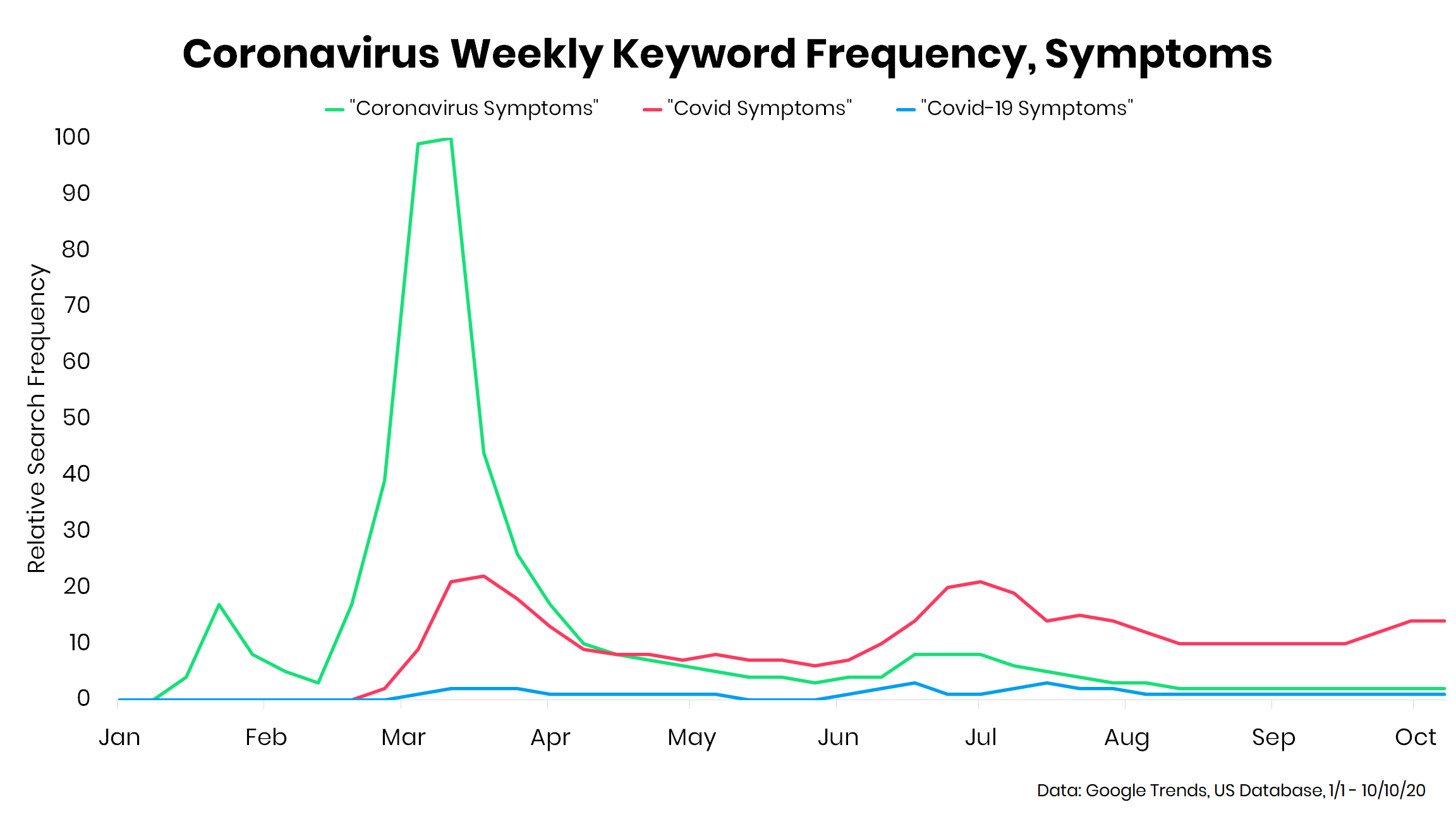
When writing a new article, we would recommend that you work all of these terms in, but lean toward using “COVID-19” as the name of the disease, and using COVID as a prefix when discussing related topics.
Use search trends to infer changes in audience behavior or status
One no-brainer approach is to drill down on queries by region — in the United States, especially by subregion (state) or metro area. On a national level, interest in COVID topics spiked in March as you would expect — virtually everyone in the country was at attention. But trends since then have ebbed and flowed with the progress of the pandemic across the country.
An interesting roll-up of queries in Google Trends is “Symptom”. It’s exactly what it sounds like: an aggregation of illness-related queries: coughing, sneezing, etc. Before 2020, there are few meaningful trends, save for a worse-than-usual flu season in 2018. Take search trends from New York City for example in the screenshot below:
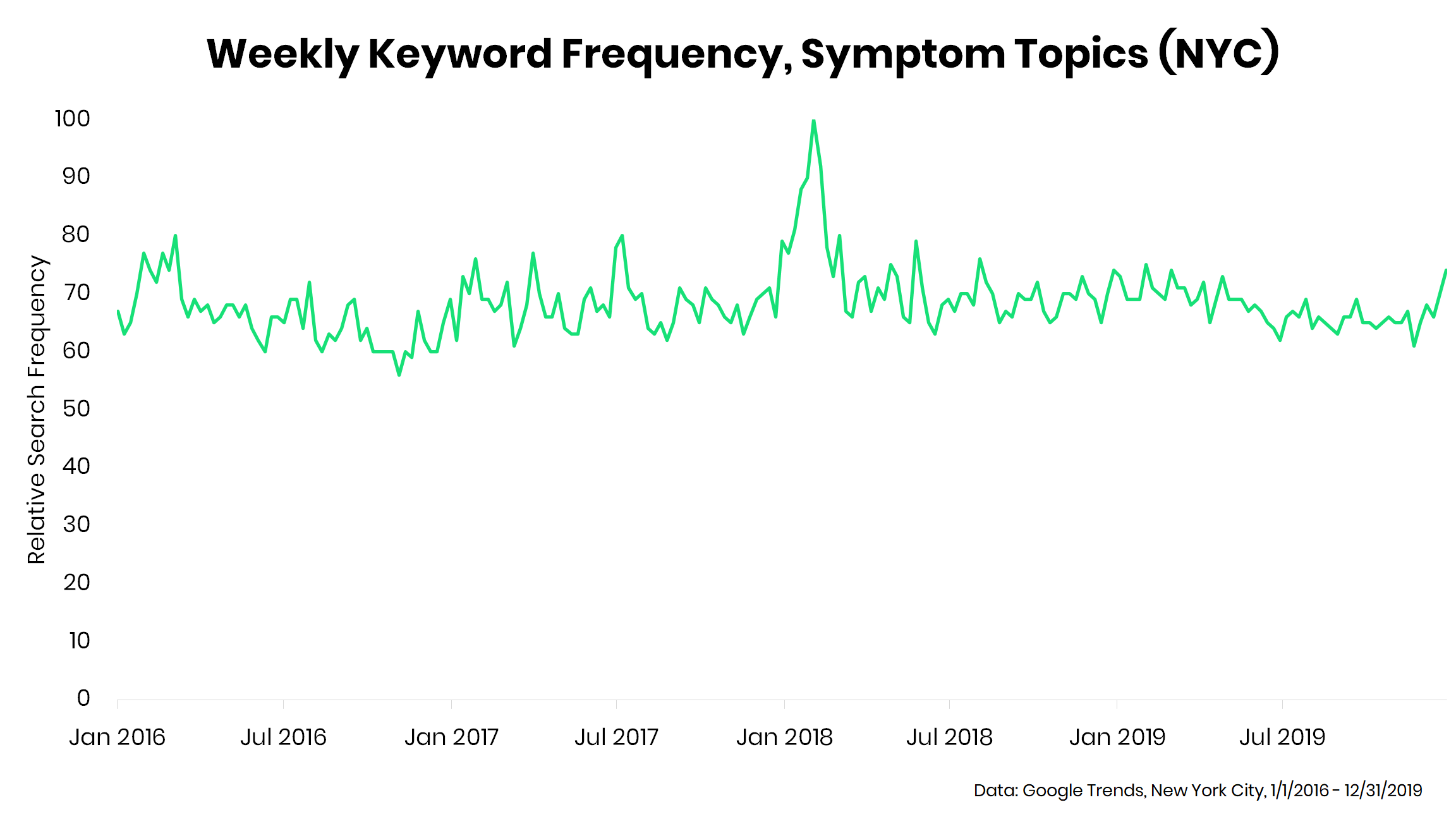
Flip the calendar year, and this trend now looks incredibly different:
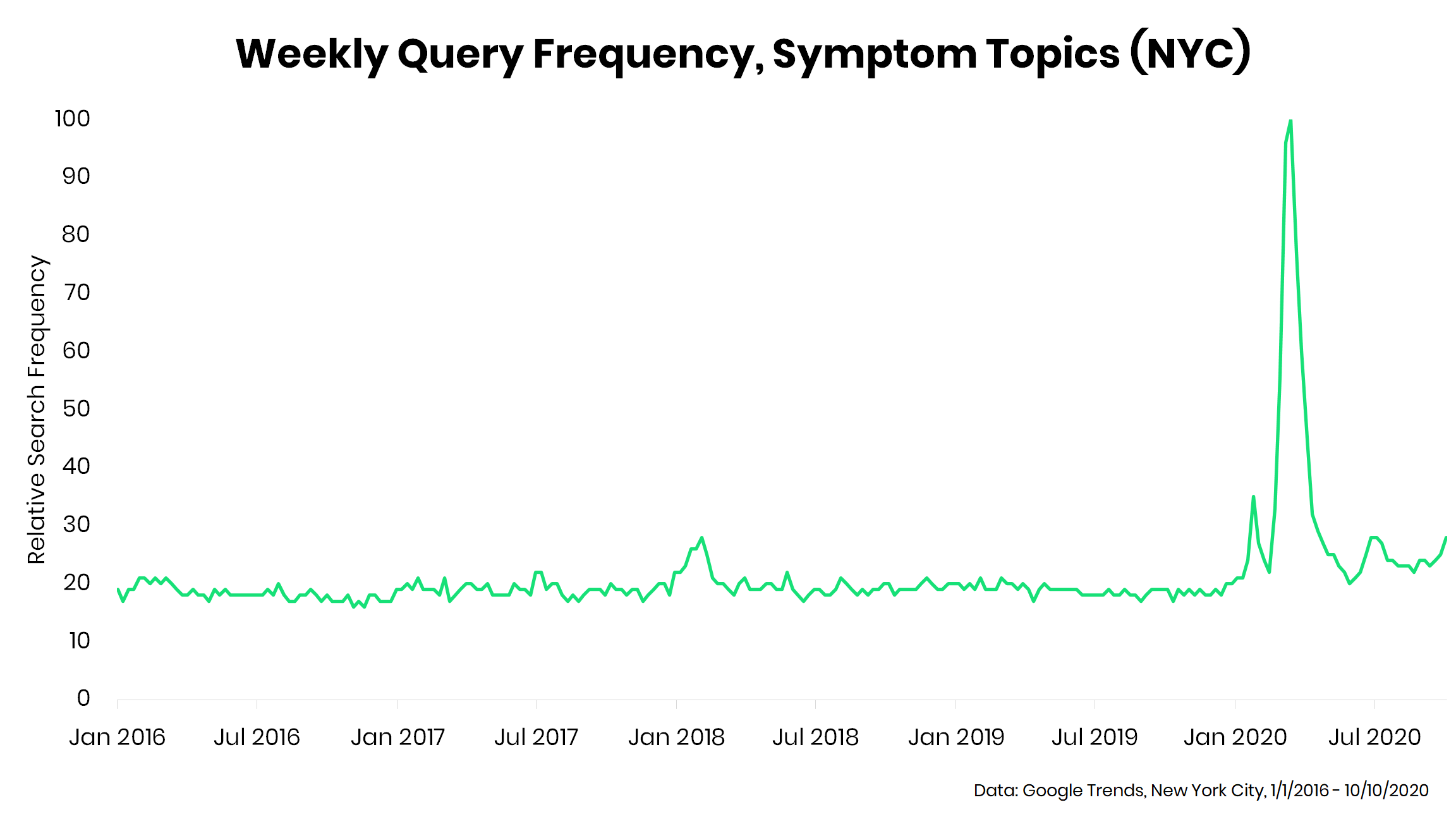
There are two noticeable spikes in 2020: an initial bump lining up with the first COVID-19 news cycle in late-January, and the first wave of infections which hit New York disproportionately hard relative to most of the United States.
Now there are several reasons search queries may not have gone back to baseline after the spike: news trends, paranoia, etc. But it could also be an indicator for outbreak areas. Let’s compare this to Phoenix which was one of the areas hit hard in the second wave of infections.
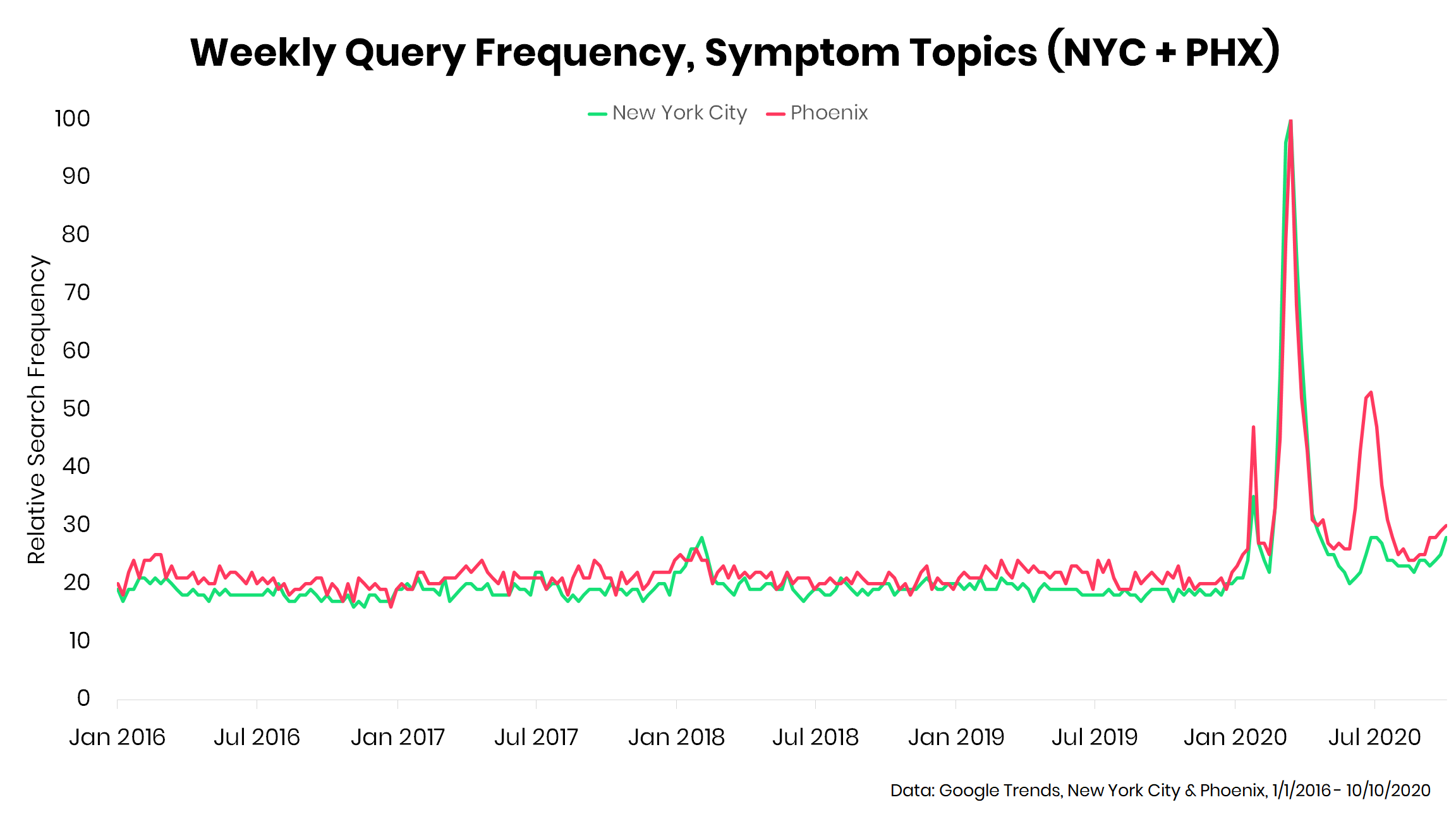
Now we can see a new third spike in the Phoenix trend which lines up almost exactly with the peak of Covid cases in Arizona in June. And we also see a recent uptick which also lines up with a slight increase in new Arizona cases.
What can you take away from this? Search trends can clue you into what’s happening in the absence of other data sources. We use these kinds of data sources to understand what resonates with audiences (and create content accordingly). But clearly we can see here that there are many other potential applications as well. For example, if you didn’t have access to the COVID new case data by state, you could use this trend data to understand which locations might be undergoing an outbreak. It’s not perfect, but it could provide an idea of which areas may be at risk at a basic level.
Look for knock-on effects in seemingly unrelated topical areas
So much of search is cyclical: users search about football every September, about turkey every November, and about healthy habits every last week of December. It’s an excellent way to plan your marketing calendar if you have topics that your strategy needs to cover.
But sometimes the cycle you expect to see doesn’t come to pass. You won’t be surprised to hear that COVID-19 has smashed all sorts of typical cycles this year.
Home & Garden: This topic is typically defined by a lightly oscillating trend that is just starting to tick up for the spring season in March… until this year when an entire country left at home suddenly needed a hobby to keep them occupied. Organizations with a quick response workflow were able to capitalize on this kind of attention.
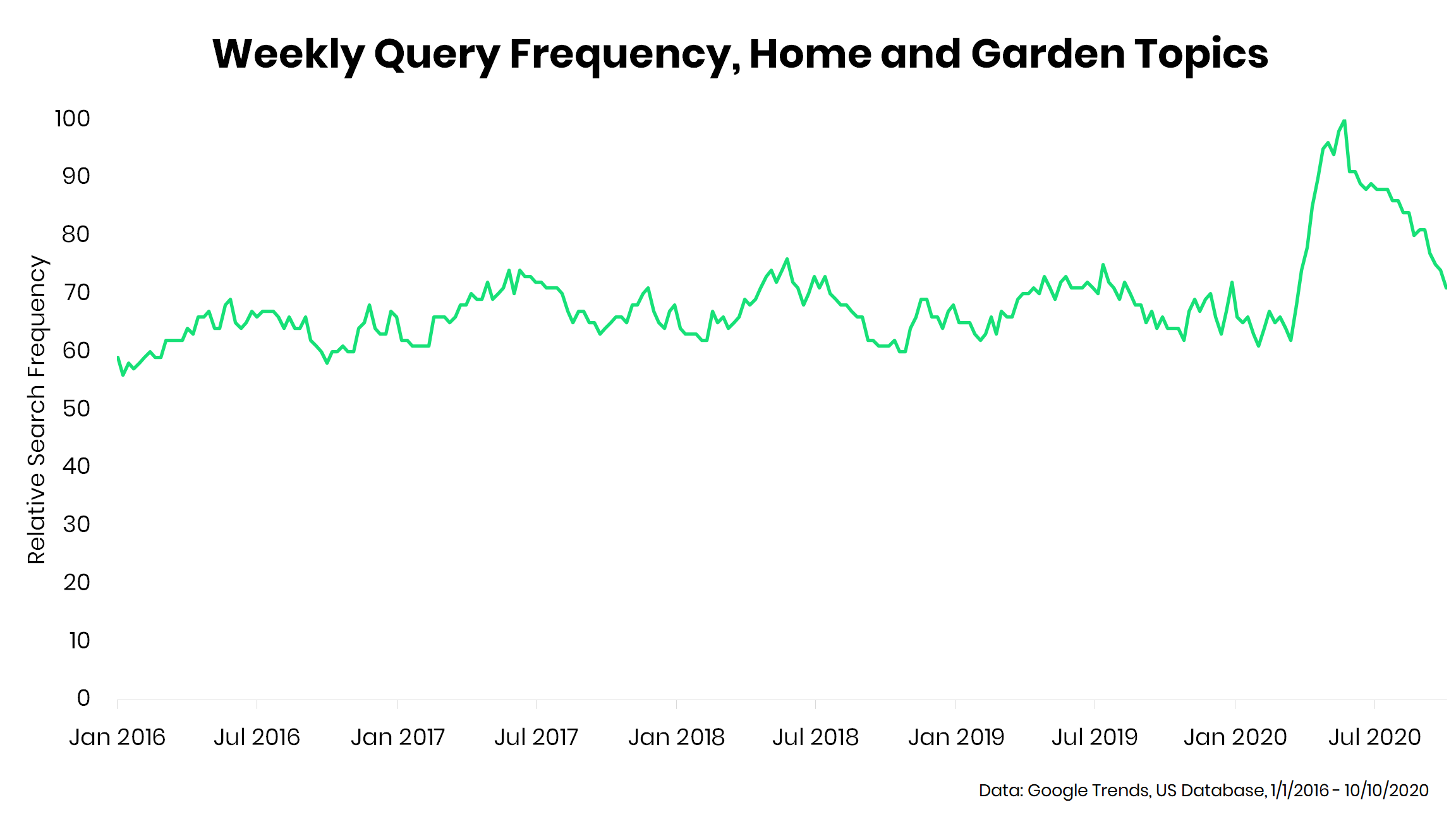
Hockey: Spring usually brings a gradually increasing frenzy of queries as the season proceeds to the playoffs beginning in April. This year however, there’s an abrupt crater that only recovers once the season resumed in August. It’s hard to drum up audience interest when there are no games on! But that said, you could see teams leaning on direct and social channels to try to keep fans engaged. My favorite tactic: teams that made classic games available to watch for free on YouTube.
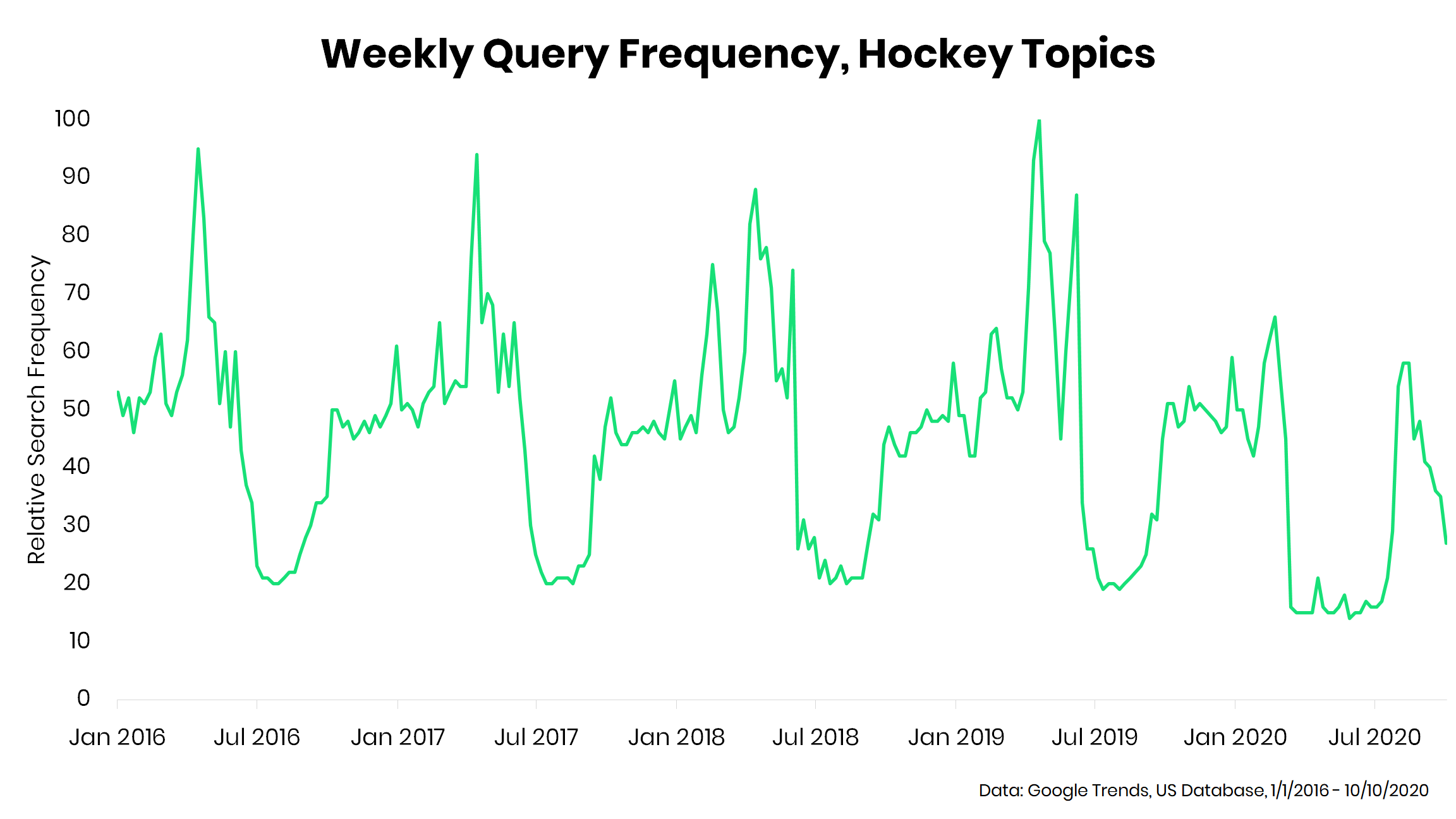
Cancer: You’re asking yourself… how can cancer be cyclical? Well, breast cancer awareness month in October leads to an uptick in queries (as you might expect). Also, queries decrease over the holidays as people presumably are more focused on happier topics. But 2020 broke this trend as well: there is not an obvious link between COVID-19 and cancer, but the focus of audiences on topics related to the pandemic appeared to crowd out unrelated queries.
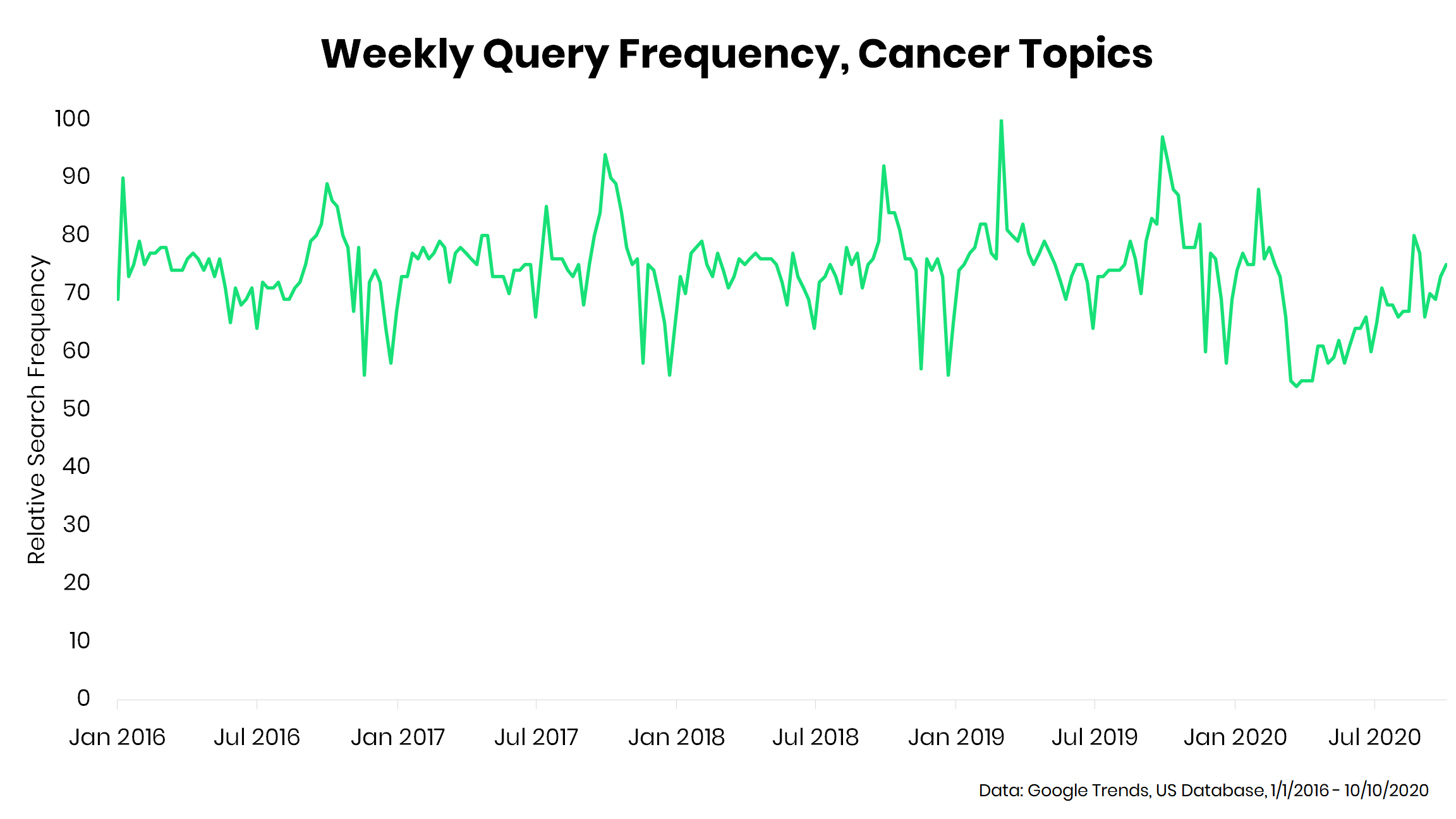
We look at these kinds of trends for clients to understand what is trending and react accordingly. The most important thing is to be responsive to the trends you’re seeing (in search or otherwise). If it’s not the pandemic next year (and we sincerely hope it isn’t), it will be something else that influences and diverts audience attention.
Subscribe
Get our weekly newsletter for tips on how to drive better content marketing performance.
For a regular stream of ideas, research and links we find helpful. And of course, to say hi!
